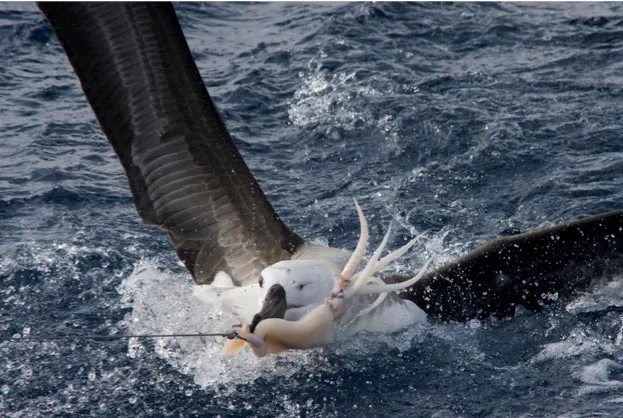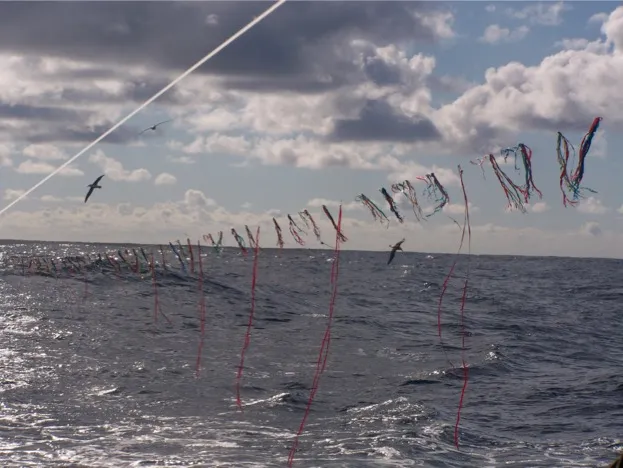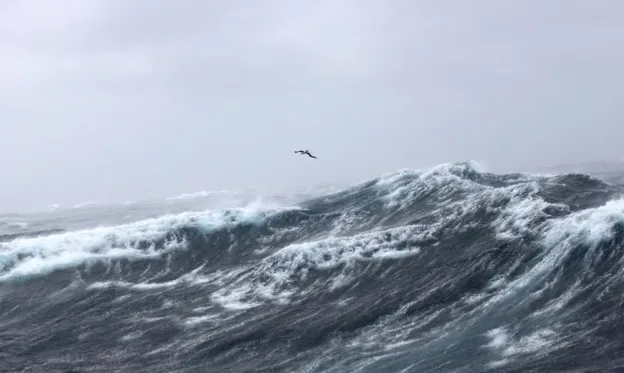Immortalised in The Rime of the Ancient Mariner and elsewhere described as "the most legendary of birds", albatrosses are celebrated as wonders of the natural world for their feats of endurance in the storm-blasted seas of the Southern Ocean.
But the proliferation of modern fishing techniques such as longlining has had a dramatic impact on these and other seabirds – 15 of our 22 albatross species are today threatened with extinction.
Ten years ago, conservationists from around the world got together to address this problem – the result was the Albatross Task Force (ATF), and in its first decade of existence, it says it has made substantial progress.
During that time, ATF experts have spent 5,000 days at sea working alongside the fishing industry to reduce so-called bycatch of seabirds.
Bycatch occurs because albatrosses and other species such as petrels are attracted to baited fishing lines close to the surface and can accidentally get hooked on them and then drown.

This juvenile black-browed albatross has been attracted to the squid bait used by a longline fishery. © RSPB
Where ships are trawling, birds get tangled in nets or collide with the cables towing them.
The ATF has deployed various mitigation measures in fisheries to prevent bird deaths and they have improved the conservation status of some threatened species.
The black-browed albatross, for example, was downlisted by the IUCN in 2013 from Endangered to Near Threatened because it appeared that numbers have stabilised or are increasing.
However, there are many problems. Ten areas have been identified as bycatch hotspots, and thanks to the work of the ATF, seven of these areas have now adopted regulations to mitigate unintentional seabird deaths.
The South African hake trawl fishery, for example, has cut albatross deaths by 99 per cent by setting bird-scaring lines that reduces the extent to which they interact with the fishing gear. Other bycatch hotspots are set to use the same method.

Lines such as these help to stop albatrosses interfering with longlines or other fishing gear. © Sebastian
BirdLife International's Patricia Zurita said large reductions in seabird bycatch have been achieved where governments have supported the use of these types of intervention.
“The ATF has demonstrated that similar reductions of albatross deaths are possible in other target fisheries if these mitigation methods are put into practice," she added.
Albatrosses are one of the largest flying birds in the world, with a wingspan of up to 3.5 metres. They spend much of their lives at sea covering huge distances and only coming to land to breed.

Albatrosses spend most of their lives at sea, not coming to dry land for years at a time. © Dimas
ATF programme manager Oliver Yates said: “Because a third of albatrosses breed in UK Overseas Territories, it is our duty to protect these threatened birds and encourage other governments to do the same while they are in their waters.”